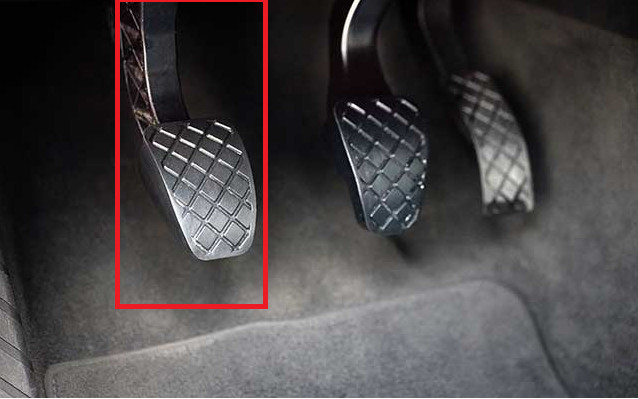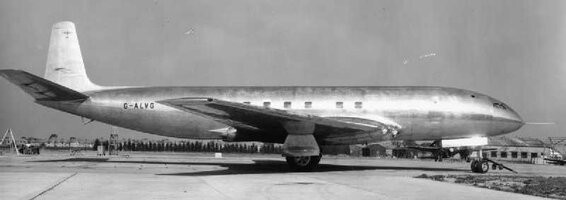How To Fix A Clutch On A Car: Expert Guide

Fixing a clutch on a car involves diagnostics, repair, and replacements that CARDIAGTECH.NET can expertly guide you through. Understanding clutch maintenance, identifying early warning signs, and knowing when to seek professional help can save you time and money. Explore solutions for clutch repair, clutch replacement cost, and clutch adjustment.
1. Understanding the Clutch System
The clutch is a critical component in manual transmission vehicles, responsible for connecting and disconnecting the engine from the transmission. Without a functioning clutch, shifting gears would be impossible, and the vehicle wouldn’t be drivable. The clutch system allows for smooth transitions between gears, enabling the driver to control the car’s speed and power. A well-maintained clutch ensures optimal vehicle performance and longevity.
1.1. The Mechanics of a Car Clutch
A car clutch system consists of several key components working together:
- Flywheel: Attached to the engine, it provides a surface for the clutch disc to press against.
- Clutch Disc: A friction plate that connects the engine to the transmission.
- Pressure Plate: Applies pressure to the clutch disc, engaging and disengaging the engine from the transmission.
- Release Bearing: Activates the pressure plate, controlling the clutch engagement.
- Clutch Fork: Transfers the movement from the clutch cable or hydraulic system to the release bearing.
- Clutch Cable/Hydraulic System: Connects the clutch pedal to the clutch fork, allowing the driver to control the clutch.
When the driver presses the clutch pedal, the system disengages the engine from the transmission, allowing for gear changes. Releasing the pedal re-engages the engine, transferring power to the wheels.
1.2. Manual vs. Automatic Transmissions
Manual transmissions require the driver to manually engage and disengage the clutch using a pedal, whereas automatic transmissions handle this process automatically. Automatic transmissions use a torque converter instead of a clutch disc, and the gear changes are managed by a complex hydraulic system. While manual transmissions offer more control and engagement for the driver, automatic transmissions provide convenience and ease of use, particularly in heavy traffic. Understanding the differences between these systems is crucial for proper maintenance and repair.
 Manual transmission gear stick
Manual transmission gear stick
Alt Text: Close-up of a manual transmission gear stick in a car, highlighting the driver’s control over gear selection.
2. Identifying Clutch Problems
Recognizing the symptoms of a failing clutch early can prevent further damage and more costly repairs. Common signs include clutch slippage, difficulty shifting gears, unusual noises, and a vibrating clutch pedal. Ignoring these symptoms can lead to complete clutch failure, leaving you stranded. Regular inspections and prompt attention to any issues can extend the life of your clutch.
2.1. Common Symptoms of a Failing Clutch
Here are some of the most common symptoms indicating your clutch may be failing:
- Clutch Slippage: The engine revs higher than usual when accelerating, but the car doesn’t speed up accordingly.
- Difficulty Shifting Gears: Trouble getting the car into gear, especially first gear or reverse.
- Unusual Noises: Grinding, squealing, or chattering sounds when pressing or releasing the clutch pedal.
- Vibrating Clutch Pedal: Excessive vibration felt through the clutch pedal.
- Sticking Clutch Pedal: The clutch pedal sticks to the floor or is slow to return.
- Burning Smell: A distinct burning odor, particularly after heavy clutch use.
2.2. Diagnosing Clutch Issues
Properly diagnosing clutch issues requires a systematic approach:
- Visual Inspection: Check for leaks around the clutch master cylinder and slave cylinder.
- Pedal Feel: Evaluate the clutch pedal for sponginess, stiffness, or unusual resistance.
- Noise Check: Listen for any unusual noises while engaging and disengaging the clutch.
- Slippage Test: Perform a slippage test by putting the car in a high gear at a low speed and accelerating. If the engine revs without a corresponding increase in speed, the clutch is likely slipping.
According to a study by the National Institute for Automotive Service Excellence (ASE), accurate diagnosis is critical for effective clutch repair. Neglecting proper diagnosis can lead to misdiagnosis and unnecessary repairs.
3. Essential Tools and Materials
Attempting to fix a clutch requires specific tools and materials. Having the right equipment ensures the job is done safely and efficiently. Essential tools include a socket set, wrenches, torque wrench, clutch alignment tool, and hydraulic jack. Materials include a new clutch kit, transmission fluid, grease, and safety gear. Investing in quality tools and materials ensures a successful repair.
3.1. Must-Have Tools for Clutch Repair
- Socket Set: For removing and installing bolts and nuts.
- Wrenches: Various sizes for different components.
- Torque Wrench: To tighten bolts to the manufacturer’s specified torque.
- Clutch Alignment Tool: To align the clutch disc properly during installation.
- Hydraulic Jack and Jack Stands: To safely lift and support the vehicle.
- Pry Bars: To separate the transmission from the engine.
- Impact Wrench: For loosening stubborn bolts.
- Multimeter: For testing electrical components.
3.2. Required Materials for Clutch Replacement
- New Clutch Kit: Includes the clutch disc, pressure plate, and release bearing.
- Transmission Fluid: To refill the transmission after reinstallation.
- Grease: To lubricate moving parts.
- Brake Cleaner: To clean the flywheel and pressure plate surfaces.
- Safety Glasses and Gloves: To protect yourself during the repair.
- Shop Rags: For cleaning and wiping surfaces.
4. Step-by-Step Guide to Clutch Repair
Fixing a clutch is a complex process that should be approached with caution. The following steps provide a general overview of the process. Always consult your vehicle’s repair manual for specific instructions and safety precautions. If you’re not comfortable performing the repair yourself, seek professional assistance.
4.1. Preparing the Vehicle
- Safety First: Disconnect the negative battery cable to prevent electrical shorts.
- Lift the Vehicle: Use a hydraulic jack to lift the car and secure it with jack stands.
- Remove Wheels and Components: Remove the wheels, exhaust system, and any other components that may obstruct access to the transmission.
4.2. Removing the Transmission
- Disconnect Linkages: Disconnect all linkages, cables, and electrical connectors attached to the transmission.
- Support the Engine: Use an engine support bar to hold the engine in place after the transmission is removed.
- Remove Transmission Mount: Remove the transmission mount and support the transmission with a transmission jack.
- Detach Transmission: Carefully detach the transmission from the engine and lower it to the ground.
4.3. Replacing the Clutch Components
- Inspect Flywheel: Check the flywheel for damage or wear and resurface or replace it if necessary.
- Remove Old Clutch: Remove the pressure plate and clutch disc from the flywheel.
- Install New Clutch: Install the new clutch disc and pressure plate, using a clutch alignment tool to ensure proper alignment.
- Install Release Bearing: Install the new release bearing onto the transmission input shaft.
4.4. Reinstalling the Transmission
- Align Transmission: Carefully align the transmission with the engine and slide it into place.
- Reattach Components: Reattach all linkages, cables, and electrical connectors.
- Install Transmission Mount: Reinstall the transmission mount and lower the vehicle.
- Reinstall Wheels and Components: Reinstall the wheels, exhaust system, and any other components that were removed.
- Refill Transmission Fluid: Refill the transmission with the correct type and amount of transmission fluid.
4.5. Final Adjustments and Testing
- Adjust Clutch Cable/Hydraulic System: Adjust the clutch cable or hydraulic system to ensure proper clutch engagement and disengagement.
- Test Drive: Perform a test drive to ensure the clutch is functioning properly and that all gears shift smoothly.
According to data from RepairPal, the average time to replace a clutch is between 5 and 9 hours, depending on the vehicle and the complexity of the job.
5. Troubleshooting Common Issues
Even with careful installation, issues can arise after a clutch replacement. Troubleshooting common problems ensures the clutch operates correctly and prevents further damage. Common issues include clutch slippage, difficulty shifting, and unusual noises. Identifying and addressing these issues promptly ensures optimal clutch performance.
5.1. Clutch Slippage After Replacement
If the clutch slips after replacement, consider the following:
- Contamination: Check for oil or grease contamination on the clutch disc.
- Improper Adjustment: Verify that the clutch cable or hydraulic system is properly adjusted.
- Worn Flywheel: Ensure the flywheel surface is clean and properly resurfaced.
5.2. Difficulty Shifting Gears After Replacement
If you experience difficulty shifting gears, check these:
- Clutch Adjustment: Ensure the clutch is fully disengaging when the pedal is pressed.
- Linkage Issues: Inspect the shift linkage for damage or misalignment.
- Transmission Fluid: Verify the transmission fluid level is correct.
5.3. Unusual Noises After Replacement
If you hear unusual noises, consider these:
- Release Bearing: Check the release bearing for proper lubrication and installation.
- Pilot Bearing: Inspect the pilot bearing for wear or damage.
- Loose Components: Ensure all components are properly tightened.
6. Preventive Maintenance Tips
Preventive maintenance is crucial for extending the life of your clutch. Regular inspections, proper driving habits, and timely repairs can prevent costly clutch failures. Maintaining the clutch system ensures optimal performance and prevents unexpected breakdowns.
6.1. Best Driving Practices to Extend Clutch Life
- Avoid Riding the Clutch: Don’t rest your foot on the clutch pedal while driving.
- Smooth Shifting: Shift gears smoothly and avoid abrupt clutch engagement.
- Use Appropriate Gear: Use the correct gear for the driving conditions to avoid excessive clutch slippage.
- Minimize Clutch Use: Reduce unnecessary clutch use in stop-and-go traffic by maintaining a safe distance from the vehicle ahead.
6.2. Regular Inspection Checklist
- Clutch Pedal Feel: Check the clutch pedal for sponginess, stiffness, or unusual resistance.
- Hydraulic Fluid Level: Inspect the clutch master cylinder reservoir for proper fluid level.
- Leak Inspection: Check for leaks around the clutch master cylinder and slave cylinder.
- Cable Inspection: Inspect the clutch cable for wear or damage.
7. When to Seek Professional Help
While some clutch issues can be addressed with DIY repairs, others require professional assistance. If you lack experience, tools, or the confidence to perform the repair, it’s best to seek help from a qualified mechanic. Professional mechanics have the expertise and equipment to diagnose and repair complex clutch issues efficiently and safely.
7.1. Identifying Complex Clutch Problems
- Internal Transmission Issues: Problems within the transmission itself, such as worn gears or bearings.
- Hydraulic System Failures: Issues with the clutch master cylinder or slave cylinder.
- Major Clutch Component Damage: Severe damage to the flywheel, clutch disc, or pressure plate.
7.2. Benefits of Professional Clutch Service
- Expert Diagnosis: Accurate diagnosis of complex clutch issues.
- Proper Tools and Equipment: Access to specialized tools and equipment.
- Warranty Protection: Protection against faulty parts or workmanship.
- Time Savings: Efficient and timely repair.
According to the Bureau of Labor Statistics, the median annual wage for automotive service technicians and mechanics was $46,880 in May 2023. Investing in professional service ensures the job is done correctly and can save you money in the long run.
8. Cost Considerations for Clutch Repair
The cost of clutch repair varies depending on the vehicle, the extent of the damage, and whether you choose to DIY or seek professional service. Understanding the cost factors involved helps you budget for the repair and make informed decisions. DIY repairs can save money on labor costs, but professional service offers expertise and warranty protection.
8.1. DIY vs. Professional Clutch Repair Costs
- DIY Repair: Costs include the price of the clutch kit (typically $150-$500) and any necessary tools.
- Professional Repair: Costs include the price of the clutch kit plus labor costs, which can range from $500 to $1500 or more, depending on the vehicle and the shop’s labor rate.
8.2. Factors Affecting Clutch Repair Costs
- Vehicle Make and Model: Some vehicles have more complex clutch systems, which can increase labor costs.
- Clutch Kit Quality: Higher quality clutch kits may cost more but can offer better performance and longevity.
- Additional Repairs: Related issues, such as a damaged flywheel or transmission problems, can increase the overall cost.
9. CARDIAGTECH.NET Solutions for Clutch Repair
CARDIAGTECH.NET offers a range of tools and equipment to assist with clutch repair, catering to both DIY enthusiasts and professional mechanics. From diagnostic tools to specialized equipment, CARDIAGTECH.NET provides solutions to ensure efficient and accurate clutch repair. Contact CARDIAGTECH.NET today to discover the best tools for your clutch repair needs.
9.1. Featured Products for Clutch Service
- Diagnostic Scanners: Advanced scanners to diagnose clutch system issues.
- Clutch Alignment Tools: Precision tools to ensure proper clutch disc alignment.
- Hydraulic Jacks and Stands: Heavy-duty jacks and stands for safe vehicle lifting.
- Torque Wrenches: Accurate torque wrenches for proper bolt tightening.
9.2. Why Choose CARDIAGTECH.NET for Your Repair Needs
- High-Quality Products: Reliable and durable tools and equipment.
- Expert Support: Knowledgeable staff to assist with product selection and technical support.
- Competitive Pricing: Affordable solutions for clutch repair.
- Customer Satisfaction: Commitment to customer satisfaction and service.
Overcome the challenges of your work with CARDIAGTECH.NET, whether it’s the physical demands, exposure to chemicals, or the need for constant knowledge updates. We help enhance your work efficiency, improve accuracy, and save costs. Contact us via Whatsapp at +1 (641) 206-8880, visit our website at CARDIAGTECH.NET, or drop by our location at 276 Reock St, City of Orange, NJ 07050, United States, and let us assist you with high-quality tools tailored to your needs.
10. Clutch Replacement FAQs
Addressing frequently asked questions about clutch replacement ensures you’re well-informed and prepared. Understanding the common queries and concerns helps you make informed decisions about your clutch repair.
10.1. Common Questions About Clutch Replacement
- How long does a clutch typically last?
- A clutch can last anywhere from 50,000 to 100,000 miles, depending on driving habits and conditions.
- Can I replace just the clutch disc?
- It’s generally recommended to replace the entire clutch kit (clutch disc, pressure plate, and release bearing) to ensure optimal performance.
- How do I know if my flywheel needs resurfacing?
- If the flywheel surface is damaged or worn, it should be resurfaced or replaced.
- What is the difference between a clutch cable and a hydraulic clutch system?
- A clutch cable uses a mechanical cable to connect the clutch pedal to the clutch fork, while a hydraulic clutch system uses hydraulic fluid.
- How can I tell if my clutch is slipping?
- If the engine revs higher than usual when accelerating but the car doesn’t speed up accordingly, the clutch is likely slipping.
- Is it safe to drive with a slipping clutch?
- Driving with a slipping clutch can cause further damage to your vehicle and is not recommended.
- What are the signs of a worn release bearing?
- Signs of a worn release bearing include unusual noises when pressing the clutch pedal and difficulty shifting gears.
- How often should I check my clutch hydraulic fluid?
- You should check your clutch hydraulic fluid at least every six months or as part of your regular maintenance schedule.
- Can a faulty clutch cause other problems in my car?
- Yes, a faulty clutch can cause problems with the transmission and other related components.
- What should I do if my clutch pedal sticks to the floor?
- If your clutch pedal sticks to the floor, it could be due to a problem with the hydraulic system or a worn clutch cable, and you should seek professional assistance.
By following this comprehensive guide, you can effectively address clutch issues and ensure your vehicle operates smoothly. Whether you choose to DIY or seek professional help, understanding the clutch system and its maintenance is crucial for optimal performance and longevity.




